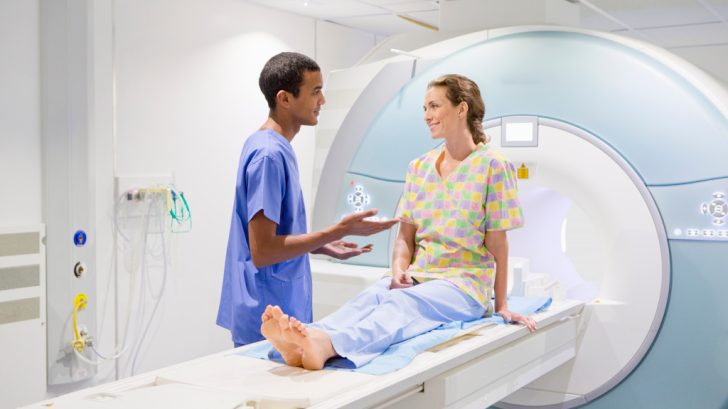- Effective communication between patients and staff improves patient experience and care quality.
- Regular staff training ensures up-to-date knowledge and skills for better service delivery.
- Technology integration enhances efficiency and accuracy in healthcare services.
- Prioritizing patient comfort and safety through hygiene standards, personalized care, comfortable facilities, and robust safety protocols is crucial.
- Quality healthcare supplies, such as medical adhesives, directly impact patient care outcomes.
Patient care is the cornerstone of any healthcare business. Ensuring that patients receive outstanding care fosters trust and significantly improves the reputation and efficiency of your healthcare services. Here are five pivotal tips that can dramatically enhance patient care within your healthcare establishment.
1. Fostering Communication
Enhancing communication within your healthcare establishment is essential. Effective communication between healthcare providers and patients drastically improves the patient’s experience and the quality of care received. Encourage your staff to patiently listen to the patients, understand their concerns, and provide clear and concise information regarding their health and treatments.
Furthermore, the adoption of technology can also facilitate better communication. Incorporating Electronic Health Records (EHR) and Patient Portals allows seamless sharing of vital information amongst healthcare practitioners and enhances patient engagement in their healthcare processes.
2. Investing in Staff Training

Staff training is vital in maintaining high levels of patient care. Regularly updating your team’s knowledge and skills ensures they are adept with the latest healthcare provision. Well-trained staff can offer more accurate diagnoses, better patient interaction, and efficient service delivery, which are crucial for patient satisfaction.
A continuous learning environment fosters professionalism and a deeper understanding of patient care nuances. This commitment to excellence will inherently create a culture where quality patient care is the priority, and staff are equipped to handle various situations adeptly.
3. Implementing Technology
The integration of technology into healthcare practices enhances efficiency and patient care. Telemedicine allows healthcare practitioners to reach patients in remote areas, ensuring that distance is not a barrier to excellent healthcare. Implementing advanced diagnostic and treatment technologies also improves the accuracy and efficacy of healthcare services provided.
Technological advancements, including AI and machine learning, can streamline administrative tasks, allowing healthcare practitioners to focus more on patient care than paperwork. This improves the overall patient experience and enhances the accuracy and efficiency of service delivery.
4. Prioritizing Patient Comfort and Safety
Patient comfort and safety should be at the forefront of your healthcare business. This is because patients are more likely to trust and return to establishments that prioritize their well-being.
Here are tips to prioritize patient comfort and safety:
Maintain Hygiene Standards
Prioritizing cleanliness in your healthcare establishment instills confidence in patients. Regular cleaning and disinfection will keep harmful pathogens at bay, ensuring patient safety and comfort. High hygiene standards extend to clean linen, sterilized instruments, and the personal hygiene of healthcare practitioners.
Offer Personalized Care
Personalized care can significantly enhance patient comfort. Understanding each patient’s unique needs and delivering care tailored to those needs makes patients feel valued and understood. It includes everything from accommodating their dietary preferences to considering mental health considerations.
Invest in Comfort Facilities

Invest in facilities that enhance patient comfort, such as comfortable seating in waiting areas, noise-canceling partitions in shared spaces, and private, well-equipped rooms for in-patients. Consider amenities like Wi-Fi access, television services, and provision for companions in patient rooms.
Implement a Robust Safety Protocol
A robust safety protocol is crucial for patient safety. This includes a comprehensive emergency response plan, frequent safety drills, and ongoing safety training for staff. Additionally, consider adopting technologies that minimize errors in treatment administration and patient identification, thereby enhancing patient safety.
5. Utilizing Quality Healthcare Supplies
In the healthcare sector, using quality supplies and equipment is non-negotiable. The materials you use directly impact the level of care patients receive. For instance, opting for a high-quality medical adhesive is imperative for wound care or surgical procedures.
Medical adhesives are crucial in patient care, providing secure and gentle adhesion to the skin and minimizing allergic reactions and discomfort. These adhesives are versatile and compatible with various medical devices and tapes. High-quality medical adhesive ensures that dressings stay in place, wounds heal properly, and patients experience less discomfort during treatment and recovery.
Other healthcare supplies, such as bandages, gloves, and syringes, also play a critical role in patient care. Investing in quality supplies ensures better patient outcomes and saves your establishment from costly mistakes and potential legal repercussions.
Final Words
Implementing these five tips can set your healthcare business on the path to providing unparalleled patient care. Effective communication, ongoing staff training, technology integration, patient comfort and safety focus, and quality healthcare supplies, like medical adhesives, create an environment where patient care thrives. With these practices meeting and exceeding patient expectations, your healthcare business will meet and exceed patient expectations, building a strong reputation for excellence in the competitive healthcare market.






